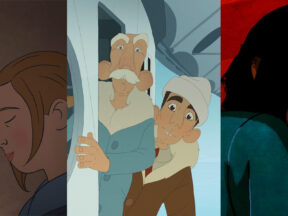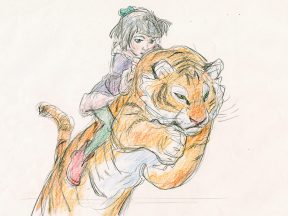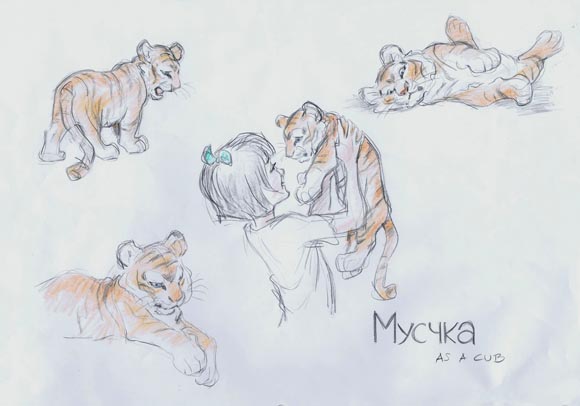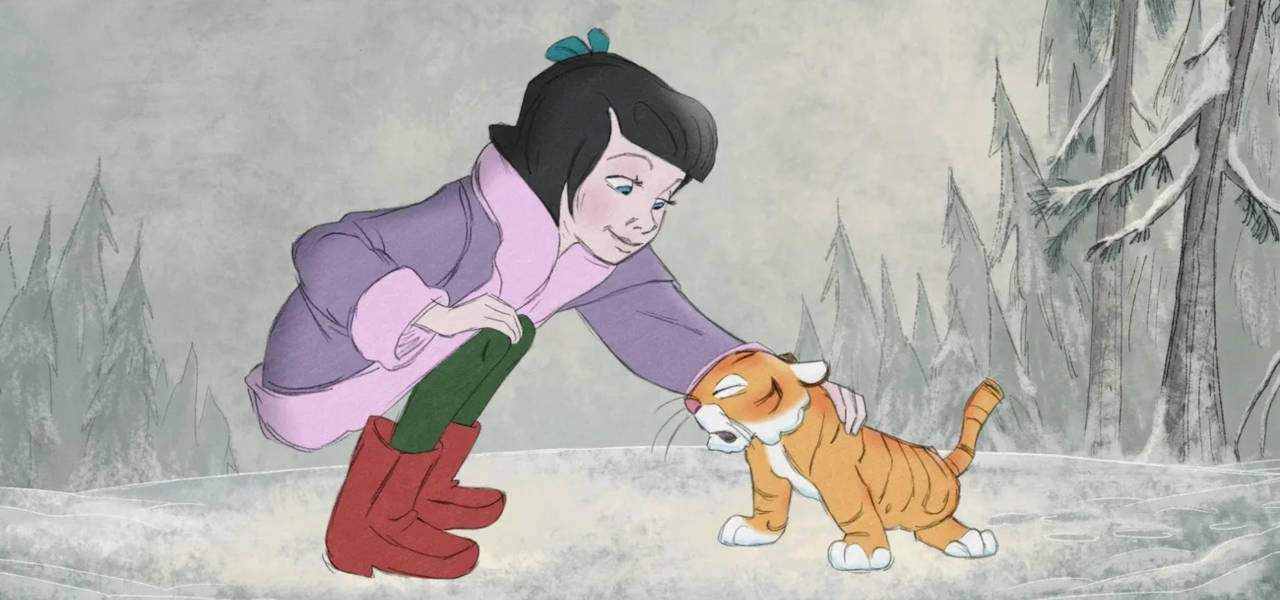
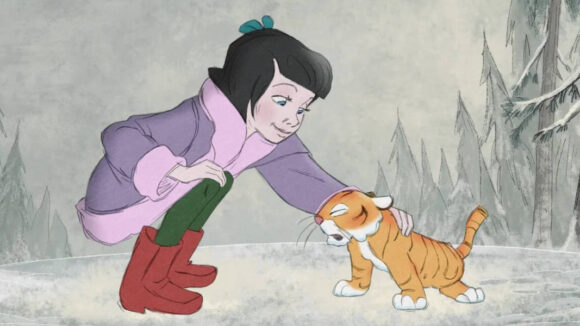
Legendary Animator Andreas Deja Discusses His Decade-Long Passion Project ‘Mushka’
After a decade in development and production, Disney great Andreas Deja is now introducing the world to his directorial debut Mushka.
Deja just hosted the European premiere of the film at the Stuttgart International Festival of Animated Film and is now at Animayo Gran Canaria in Spain’s Canary Islands, where he is screening the film and hosting masterclasses, a drawing workshop, and meeting young artists.
Deja was with Disney for three decades and left an incredible legacy behind him when departed. During his time there, he oversaw the animation of numerous iconic Disney characters including King Triton from The Little Mermaid, Gaston from Beauty and the Beast, Jafar from Aladdin, Scar from The Lion King, Hercules from Hercules, Lilo from Lilo & Stitch, and Tigger from Winnie the Pooh (2011), to name a few. He was honored with the Winsor McCay Award from ASIFA-Hollywood in 2007 and named a Disney Legend in 2015.
Mushka turns on a young girl named Sarah who is pulled from her comfortable life in Soviet-era Kyiv and forced to live with her dad in Siberia after her grandmother suffers a fall. Unhappy and feeling lost, the girl disobeys her father’s orders and wanders into a nearby forest where she encounters a tiger and her cub. Startled by the big cat, the girl is carried back to the safety of the camp by the tiger, who is quickly hunted down and killed by the laborers there.
When Sarah learns that the mother tiger has been killed, she convinces her father to let her raise the cub. The two bond as the animal matures into a huge apex predator that the men of the camp see as an opportunity for profit, setting up a tense confrontation.
Deja took time from his festival tour to speak with Cartoon Brew about his passion project, what it took to make it happen, and what it’s like to be sharing it with the world now.
Where did the inspiration to make Mushka come from? Why was this the film you wanted to make after striking out on your own?
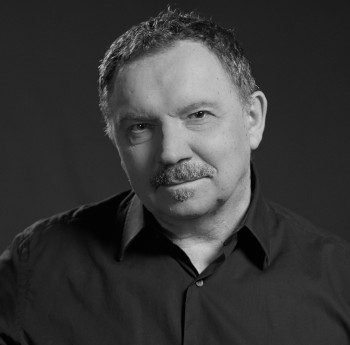
After my three decades at Disney, I asked myself a series of questions, starting with, “What do you like to draw?” I like drawing animals more than people, so I thought about what would be fun to animate. Well, I love big cats and have some experience from Lion King, so I thought maybe I could build on that with a tiger. I’ve always loved stories about relationships between wild animals and humans, and I think there is something very dynamic and exciting about that. I immediately thought of a little girl that could raise this tiger cub, and in doing so she would learn that there are some bad people out there that want to harm the tiger, so she would try to take him back out into the wilderness where he’d be safer. So I had that general idea, but I’m not a story guy so I reached out to my friend Michael McKinney to help with the story. He writes poetry and does architecture. He’s a real artist. He fleshed out the story, added the dad, the grandma, and what he came back with read almost like a novel.
Can you talk about the visual development that went into creating Mushka? There is a bit of a Disney look to it, but how did you make it your own? How is it different from the work you did while at Disney?
I’ve always been a huge fan of the Disney of the 1960s and 1970s, Sword in the Stone, The Jungle Book, you know, those were the first movies I saw. I only saw the really old Disney films when I was older, so I first fell in love with the drawings with the thick black outlines that became characters and told stories. But I missed out on that a little bit when I was at Disney because we tended to go back to the cel-painted look. Everything was super clean and had a certain color to it then you’d put a flat piece behind it. I thought I needed to go back in time a bit with Mushka and do something like the work that inspired me. So we didn’t have any cleanup artists working on our film. That gives a vibrancy to the line as you might remember seeing in 101 Dalmatians. I wanted that for the backgrounds as well. I had my wonderful background painter Natalie Franscioni-Karp paint about 80% of the backgrounds herself. I told her, “Don’t paint anything that looks super finished and super beautiful. Let’s keep a rough quality. That also fits the story better. There is a roughness to that world out there in Siberia. We don’t need to finish every leaf and rock. And she got it immediately.
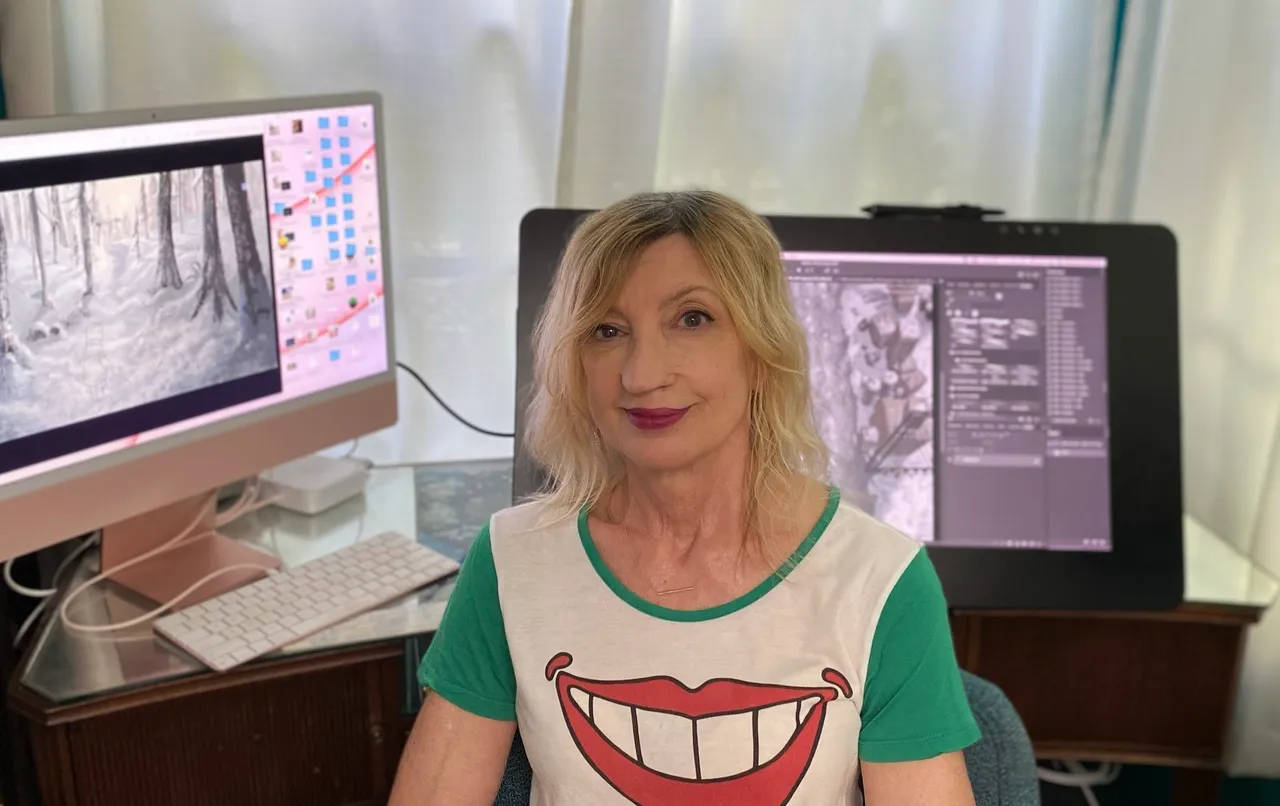
In traditional animation when you are happy with your storyboard, you give the board to the rough layout artist who analyses everything one more time and then it goes to a cleanup layout artist who does a fine line drawing of the layout, and that goes to the background painter. Well, we didn’t have any of those layout people. It went from story sketch to Natalie, to paint.
How long were you working on the film?
It was close to seven to eight years. Which seems ridiculously long, but that’s what it took. Our crew stayed very small. When you see the credits at the end of the film, most of those people are from Skywalker or from the orchestra. The artistic crew stayed very small. My freelance artists came and went. Sometimes they would only be around working on the film for two weeks between jobs and then I might not see them for four or five months. To be honest with you, I asked quite a few artists to work with that I knew would be good on this, but most of them had their own projects they were working on when they were between jobs. So my crew stayed really small. The good thing is that I didn’t have a studio finance this because then I would get a call saying, “Hey Andreas sequence nine was supposed to be done last Friday, where is it?” This way when it was done it was done and we just stayed on course.
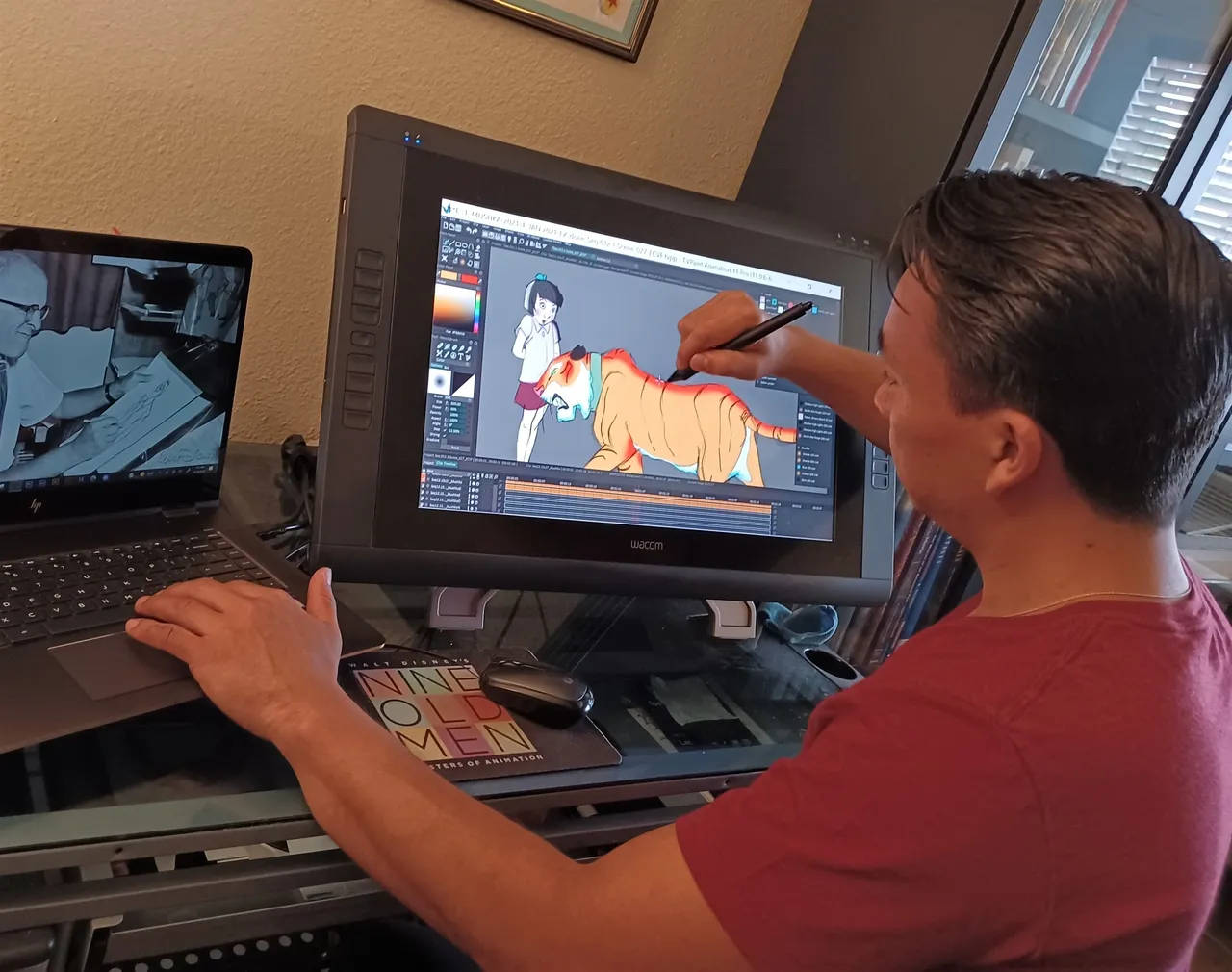
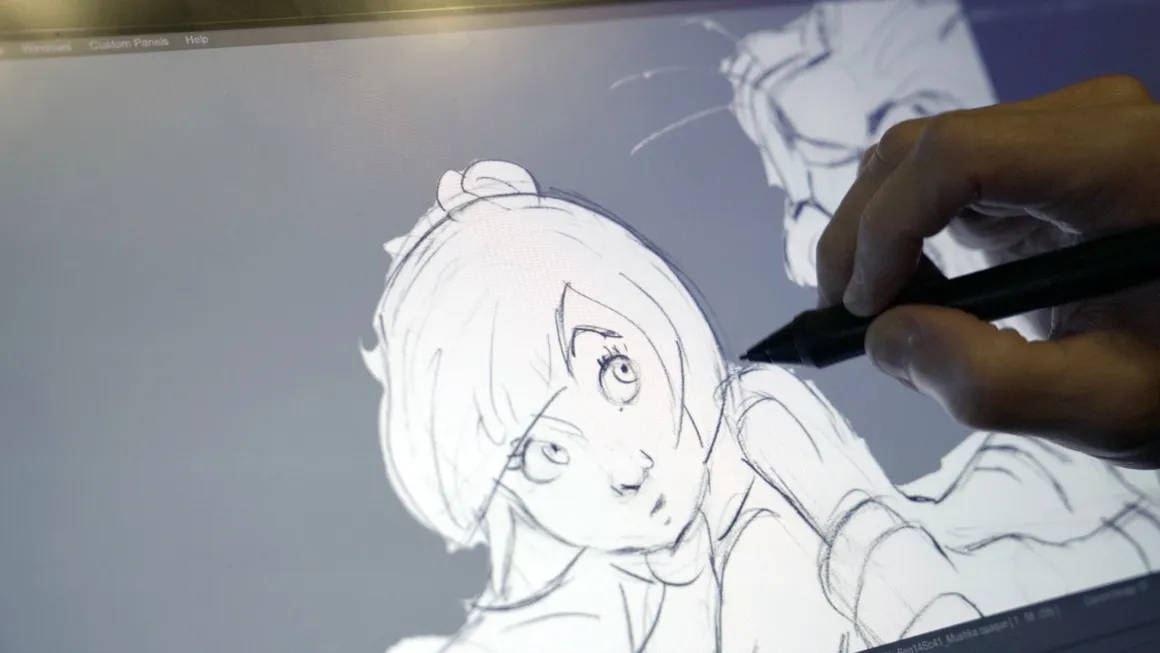
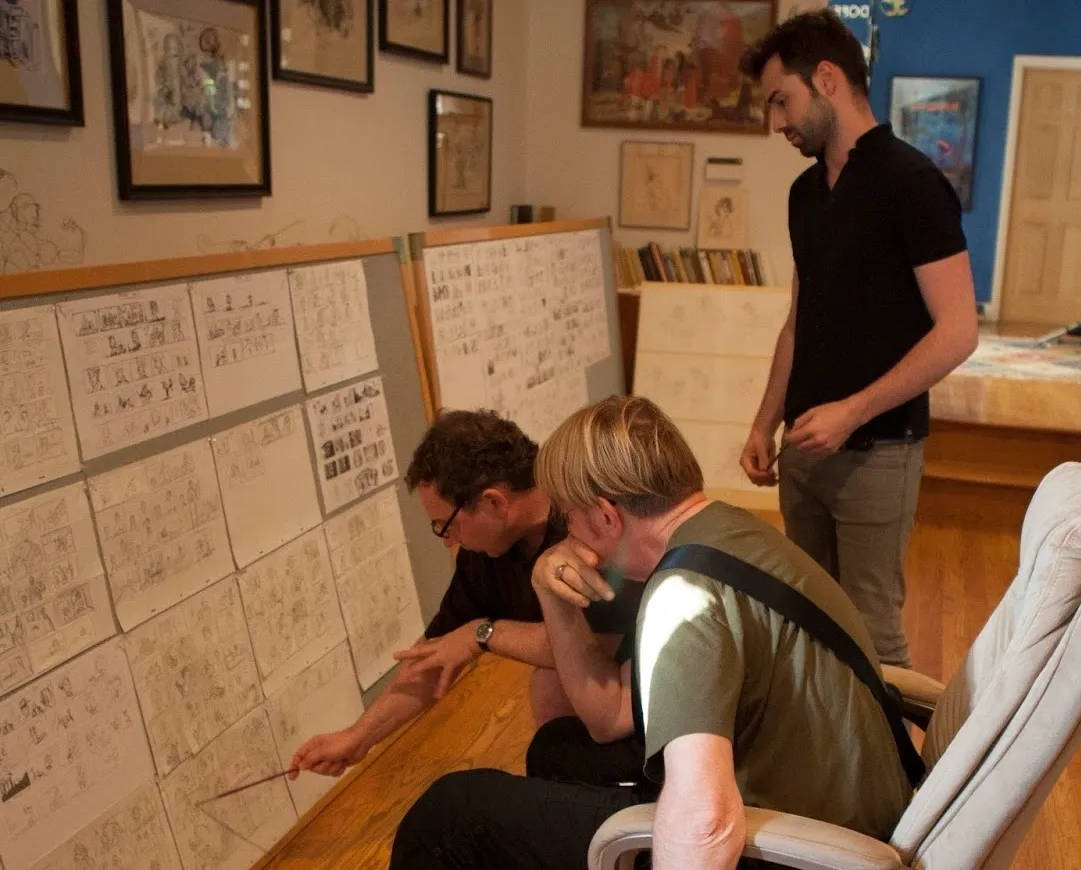
Can you talk me through the production process? Which tools did you use and how did you achieve the look you were going for?
It was all drawn on paper. I still have stacks and stacks in my office. It’s just something I was used to, and honestly, never saw a problem with it. I like paper, and if the artist is happy with that, why give it up? I tried early on a bit of storyboarding on the Cintiq and it was going fine, but I knew if I had drawn those poses on paper they would be better. So, Matthieu Saghezchi, who did the storyboard with me, told me, “Before you get cranky, go back to your desk and draw on paper and I’ll come by with my phone and take pictures and use those.” And that’s exactly what he did and everybody was happy. We did use TV Paint as our main program because its very 2d friendly and we had a little bit of Photoshop. The characters do have solid painted areas, but we added a texture over that. All that took was just one sheet of paper and you just scribble a texture with your pencil, and we’d scan that in and expose it at 80% or something, just so that it kind of looks like somebody with a crayon could have colored this. That was something I wanted on top of the cel-painted look.
I suppose one disadvantage is that studios can help you find distribution. What are your plans for the film after you finish your festival run?
When we’re done with the festivals I’ll knock on the doors of some streamers, but right now I’m focusing on introducing the film to new audiences and enjoying sitting in the audience and watching people react to the film. Experiencing them experiencing the film for the first time.
How different is that experience now that it’s your film the audience is reacting to, and not just a film that you worked on?
It’s a little bit different for sure. I was just thinking about that the other week and if I’m really honest with myself, which I’m trying to be, Lion King, Aladdin, Beauty and the Beast, and Roger Rabbit, all of those films would totally exist without me. Someone else would have filled my role. In a different way probably, but they would exist. This Mushka thing only exists because I had an idea you know? It’s kind of a weird thing to think about. If I weren’t around, this whole thing wouldn’t exist. So maybe it’s a bit more of a thrill to share it with the world because there is nobody behind it other than me and my crew. There is also a sense of pride because I’ve never directed. I watched the directors whom I worked with, Musker and Ron Clements, and all of the others, so I know what the job entails. But as a director, you’re responsible for storytelling. You’re not just given a scene and told to go animate it. No, no, no… character arcs, storylines, does the story make sense, is it too long, what’s the pacing all about. All these things I never really had to mess with now came into play. But I bounced my ideas off other people to make sure that I was on the right track. It was still a team effort.
Do you think that making your own film is something that more artists should consider? Is it the kind of thing where you need resources, connections, and a resume built over a career, or should more young, less experienced artists try making their own films?
I think so. That would be one thing I’d like to see. The idea that you can do this yourself now, or with a small group of friends. It’s entirely possible. It doesn’t have to be 28 minutes like my film, it can be a five or seven-minute project. It’s not overwhelming anymore because one of the big reasons back in the day that those passion projects failed was that you needed to deliver a 16-millimeter or 35-millimeter print of your film to festivals or networks and that was really expensive. So many artists just stopped even trying to go there. Well, that’s not the case anymore. Now it’s just a file, a little thing you can send somebody in a few seconds. So because of that cut in costs, it’s entirely possible to set up your pipeline there, especially with some of the tools that can help you with it, and do your thing. Infect other people with a passion for your project and they’ll help you. It’s so doable that there is no excuse anymore not to do your passion project.
You’re touring with the film now. In fact, you’re speaking to me from the Animayo festival in the Canary Islands where you’re also giving a masterclass and meeting with attendees. Is that something you’re passionate about as well? Teaching and inspiring new generations of artists?
Totally, totally. You meet so many people who are right on the verge and thinking, “I don’t know if I can do it.” I want to push people over that edge and say, “Of course you can do it!” Talk it over with your friends who have some talent, work with people you respect, and get excited about your idea. I got so excited two or three years ago when Ralph Bakshi went to Comic Con in San Diego and he said, “I really don’t like young people waiting by the phone waiting for the studios to offer them a job.” He said, “Do it yourself.” He called the computer “the machine,” and he always said “the machine” can help you keep costs down and let you do your project. It’s so doable.
Mushka credits
Producer: Andreas Deja, Roger Viloria
Executive Producer: Craig Peck
Music: Fabrizio Mancinelli
Editing: Matthieu Saghezchi, Roger Viloria
Production Manager: Roger Viloria
Art Department: Ariel Goldberg, Peter Moehrle
Animation Department: Andreas Deja, Courtney Dipaola, Craig Elliott, Daniel Ernesto, Natalie Francscioni-Karp, Ambrosio Garcia, Steven E. Gordon, Kris Heller, Bea Höller, Tim Ingersoll, Greg Manwaring, Stephen McDermott, Tooba Rezaei, Matthieu Saghezchi, Aidan Terry, Andreas Wessel-Therhorn

